We have a number of walnut trees at our new house, but there is this one in particular that grows huge walnuts. State Fair prize winner sized walnuts. I mean, look at that thing! In the past week, those green hulls have started cracking open, almost like flowers to reveal the walnuts inside of them. We’ve been having great fun collecting them, my youngest son and I. One of his favorite activities at school is the nut cracking activity and knowing that his teacher is always in need of walnuts, he runs out there to collect her a bag as often as he thinks of it.
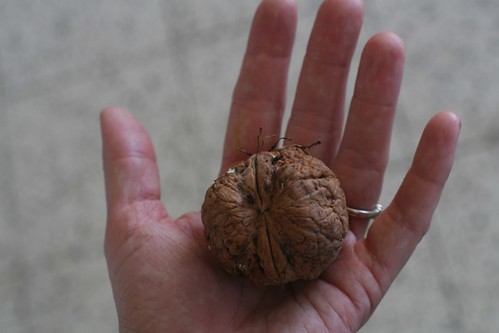
The other month, when we took the day to go to Point Reyes, I came across the book Harvesting Color: How to Find Plants and Make Natural Dyes by Rebecca Burgess. Have you heard of her? She started the Fibershed project where she challenged herself for one year, to wear only clothes that were locally produced. And I’m not talking about just sewn locally, but that the fibers were actually grown locally too! Incredible! Well a new friend of mine (and you’ll see why we’ve been keeping in touch if you click over to her blog) recently took a workshop by Rebecca and reading about it left me totally inspired. As if I need another hobby, I wanted to try my hand at natural dying. After some research I found that walnuts are a great and easy start. A gateway drug, if you will.
With walnuts, you don’t need a mordant or anything fancy to make the dye work. From one tutuorial I read, you just place a handful of walnut hulls (doesn’t matter the variety of walnuts) into a jar of water and leave it for a week. Which I did. A mold started to grow on the top by day 7, which is when I scooped off the mold and strained the dye. I had a whole slew of Cascade Eco yarn that was left over from a Shalom gone very wrong. I had been wanting to dye it for ages. So I cut off a little bit of yarn and tossed it into the dye for about 20 minutes or so. Maybe longer or maybe less. I didn’t keep track, it was about as long as it took to clean the kitchen with a ‘yank-everything-out-of-the-cupboards’ baby following me.
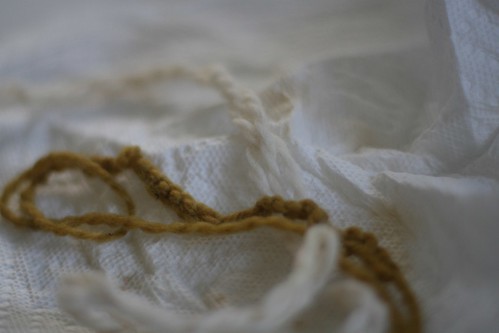
And this is how it turned out. I liked it, so I threw about half of my stash into the jar. Ran off to go pick the kids up from school, ran another errand and came home and took it out.
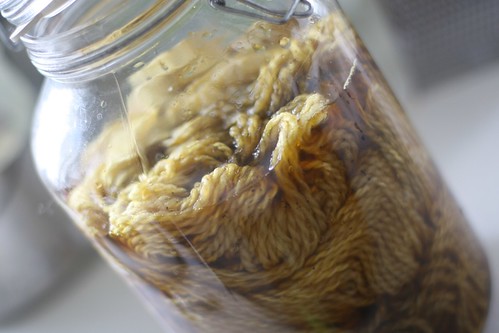
And this is what I had. Pretty, isn’t it? I rinsed it out and hung it to dry.
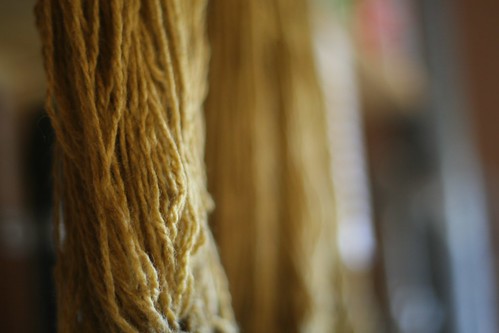
Now I have this incredible autumnal looking yarn to work with. I left half of the yarn undyed so I could make something that was striped. I’m thinking maybe a striped Oatmeal? I don’t know, any knitters have any pattern/design suggestions?
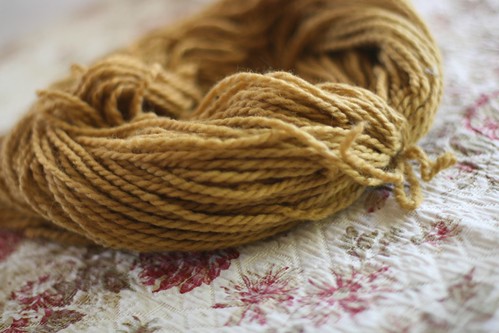
Do any of you dabble in natural dying? What have you learned? Now I’m eager to learn more!
p.s. You can find me here on Ravelry, and I’m now on Pinterest!
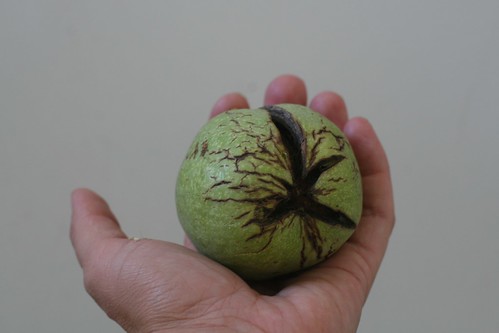
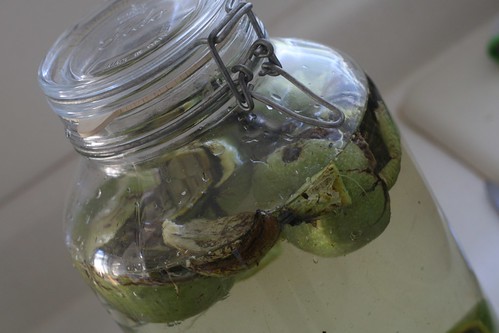


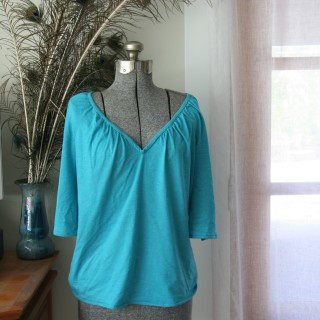
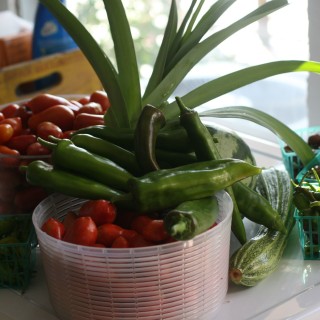
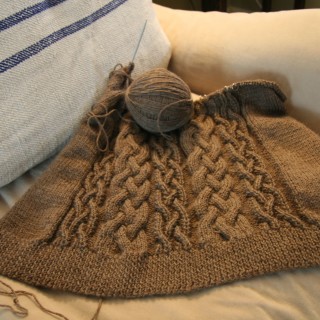
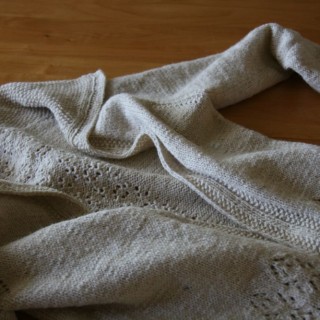
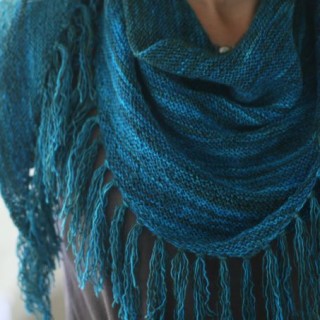
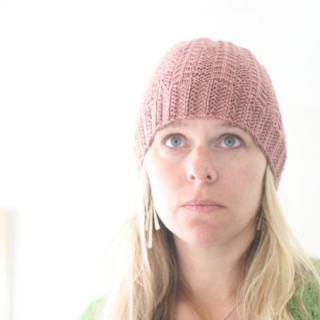

This is something I have been trying to get into- thanks so much for the post! I dyed some fleece with coffee last week and was disappointed that it didn’t leave near as much color as I would have liked, so I may have to get that book!
When my 13-year old daughter was a baby, she wore my christening gown – then aged 35 years! No longer white, I had a difficult time finding an “ecru” colored tights for a newborn. I dyed a white pair of tights using black-tea tea bags. The longer they soaked, the darker they got, up to a point.
Also, I just read somewhere that if you add vinegar when washing a new set of towels it will help set the color. I wonder if you could soak your yarn in vinegar to do the same?
What a great project. I don’t know why I thought the dye would be darker. I guess I was thinking of walnut stained furniture. Such a gorgeous color.
Lovely colour! Can’t believe it was achieved just by using walnut hulls, amazing.
i am not a knitter at all but now i want to go dye some yarn!! or grow walnuts or both.
I really enjoyed this post, because I am off to spinners group today! I have never used a wheel before but am determined to learn. I can’t wait to have some homespun yarn ready to experiment with dying!
Wow, Kendra, that color is stunning! And hello … neighbor! So glad you found Rebecca’s book inspiring. Everything about her is inspiring. Maybe now you can even grow some indigo
I was suprised to see that the stain is so light, it is really a nice shade. I would love to use walnuts to dye yarn. But I was wondering if it will run or get lighter when washed.
I’m glad you are on pinterest now. I just set up my account this week.
it shouldn’t if you put it in the dryer after washing.
I’ve enjoyed reading different posts here on your blog – found you through a PIN! I use only black walnuts to dye my baskets. I have a quicker way to make the stain if you are in a hurry. Fill a leg of an old pantyhose with the entire nut & hull. I’ve never counted how many I can fit in, but at least 2 dozen. Tie off the end of the pantyhose to keep all the floaties out of your stain. Fill an old pot with water – maybe 1 -2 gallons of tap water, I’m never precise about it. Bring to a boil on your stove and then simmer for several hours until the depth of color suits you. Store in a milk jug in the fridge. Make sure to label the milk jug!! When I’m ready to dye a basket, I simply heat the stain back up in my dye pot (make sure it’s a dedicated dye pot, not used for any food consumption) http://www.1803ohiofarmbaskets.blogspot.com is my basket blog where you can see photos of the baskets dyed with my stain.
How about dyeing your hair with black walnut? Can you imagine? Used to be done….
Thanks for all the great tips you have.
~Ann
Hi Anne,
Are ;you related to the historical Jewish girl named Ann Frank?
Have you tried dying your hair with walnut? If so, how’d it turn out?
Wow! When I saw this I was in shock! I have been making natural dyes and paints from flowers and leaves for several months! I am so happy to see someone else making natural coloring! Also, I was wondering if you will be writing about how to make soap? I’m big into making homemade cosmetics, and was looking for a great recipe so that I can start making soap!
Could you give me a recipe on how to make paint from flowers? I’m so interested in making crafts and cosmetics!
Thanks,
-Rose M.
Hi, What I did was gather flowers and berries, and then mash them together, into a paste. then add some warm water and thats it. add less water for thicker paint. Also, you can boil the mashed berries and flowers in water, for a stronger paint, however i’ve never tried that variation.
Good Luck.
Thanks a lot! Have you tried this on paper? If so, how’d it turn out? How long does this last?
Thanks!
You can also use beets to dye, the longer it heats, the darker it’ll be.
black walnut is one of the best to get started with! you dont need a mordant to make the dye permanent and its packed full of dye. If you cook the hulls you can get a pretty powerful dye. I have heard that the stain you get from soaking isnt the true dye and will fade over time in the sun or even just over the years. My aunt studied under a mountain woman every summer for 40 years and she has been teaching me all she knows for the last 10 years. and it wasnt until this summer that ive really gotten excited about natural dyeing. she and i made a really powerful black walnut dye years ago, and we made up about 20 gallons. we have used it every year and it hasnt even begun to weaken!! we have to dilute it just to get lighter browns like you got here another dye you can use without a mordant is onion skin from your yellow onions! the red dont make a dye, just the yellow. its addictive, have fun!!!
another dye you can use without a mordant is onion skin from your yellow onions! the red dont make a dye, just the yellow. its addictive, have fun!!!
Years ago I made lots of dyes from various natural sources. The most memorable were, walnut from twigs and lichens, some very simple lichens that dye without needing any mordant, they grow around here on barn roofs and rocks, cudbear lichen soaked in urine for 3weeks made the most beautiful deep reds and purple when we added vinegar
Christina Watson, Herefordshire
Black Walnut if Used correctly will dye wool a beautiful dark brown that is color fast. If you don’t use the heat process the dye may be fugitive ( fade) . Although as your previous posts have stated walnuts is a darn stubborn dye!
Tea, beets or blackberries make a STAIN and not a dye.
One pound of leaves will dye one pound of wool. Pack those leaves in there to get the darkest hue. The husks have even more color in them, but I usually wait and dry them, crush them and then tie them into cheesecloth. Of course the more vegetative matter the darker the dye.
Walnut is a harsh dye and will make your wool scratchy, so I often will use a hair conditioner in a final rinse. To get an awesome black an indigo overdye will do the job splendidly! I have been dying with natural dyes for over 30 years. The best book on natural dyes is by far the Ida Grae “Nature’s Colors- Dyes from Plants” book. I don’t think it is still in print but you can get it used from Amazon. Keep on experimenting